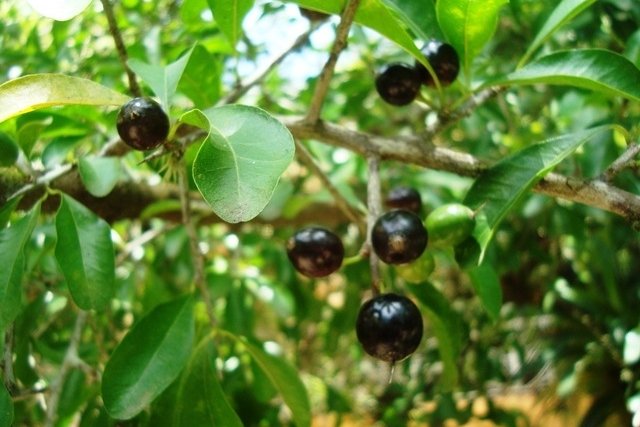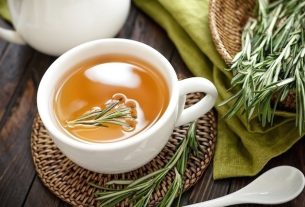Quixaba is a medicinal plant of the species Sideroxylon Obtusifoliumindicated to help in the treatment of inflammation in the uterus, vaginal discharge, ovarian cyst, skin wounds, or diabetes, as it is rich in triterpenes, steroids, flavonoids and tannins, with anti-inflammatory, healing and hypoglycemic properties.
The normally used part of this medicinal plant, which is also known as sapotiaba, quixaba preta, caronilha, rompe-gibão and maçaranduba-da-praia, is the bark, from which the active substances are extracted, for the preparation of tea or alcoholic extract. .
Quixaba can be purchased in some health food stores and markets, and should be used with medical advice or from a professional specializing in medicinal plants.

What is it for
Quixaba is indicated to help in the treatment of:
- Inflammations in the uterus;
- Ovarian cyst;
- Vaginal discharge;
- Back pain;
- Diabetes;
- Skin wounds;
- Kidney stones.
Furthermore, as it has a hypoglycemic action, quixaba can be used to help treat diabetes. See other options and how to prepare home remedies for diabetes.
Although it has many benefits, quixaba does not replace conventional medical treatment, and should be used with medical or herbalist guidance.
How to use
The quixaba peel can be used to prepare tea or alcoholic extract, as follows:
- Quixaba tea: use 2 tablespoons of quixaba peels for 1 liter of water. Cook the peel in water for 15 minutes, then strain and drink to aid in healing and anti-inflammatory treatments;
- Quixaba alcoholic extract: use 200 g of quixaba peel for 1 liter of grain alcohol. Macerate the peel together with alcohol for 24 hours in an appropriate, covered container. After maceration, reserve in a dark glass container to prevent light from passing through. Take a teaspoon of alcoholic quixaba extract, diluted in half a glass of water, to help treat diabetes.
The recommended daily dose of quixaba tea or alcoholic extract should be advised by your doctor or a herbalist specialist.
Possible side effects
The main side effect that may occur when using quixaba is hypoglycemia, as it can greatly reduce blood sugar levels, especially in people taking medication for diabetes. Know how to identify the symptoms of hypoglycemia.
Therefore, the use of quixaba must be done with medical advice or from a professional with experience in medicinal plants.
Who shouldn’t use
Quixaba should not be used by children, pregnant or breastfeeding women, or by people sensitive to the substances present in quixabeira and insulin-dependent diabetics.
Furthermore, as it contains alcohol in its composition, the use of quixaba alcoholic extract is not recommended for people undergoing treatment for alcoholism who use the medicine disulfiram.
Bibliography
- BARBOSA, Daniela de Araújo. Ethnobotany and phytochemical screening of Sideroxylon obtusifolium (Roem. & Schult.) TD Penn. (Quixiabeira), Cabaceiras, Semiarid of Paraíba. Master’s Dissertation in Development and Environment at the Federal University of Paraíba, 2018. Federal University of Paraíba – UFPB.
- EMBRAPA. Sideroxylon obtusifolium (Humb. ex Roem. & Schult.) TD Penn. QUIXABEIRA. 2017. Available at: <https://ainfo.cnptia.embrapa.br/digital/bitstream/item/162688/1/Barbara-2017.pdf>. Accessed on January 25, 2023
- KILL, LHP; et al. Reproductive biology of Sideroxylon obtusifolium (Roem. & Schult.) TD Penn. (Sapotaceae) in the semiarid region of Bahia. Rev Tree. 38. 6; 2014
- AQUINO, P.; et al. Evaluation of the Topical Anti-inflammatory Activity and Antibacterial Activity of Methanol Extract in the Sideroxylon obtusifolium Leaves. Colombian Biological Act. 21. 1; 131-140, 2016

Sign up for our newsletter and stay up to date with exclusive news
that can transform your routine!
Warning: Undefined array key "title" in /home/storelat/public_html/wp-content/plugins/link-whisper-premium/templates/frontend/related-posts.php on line 12
Warning: Undefined array key "title_tag" in /home/storelat/public_html/wp-content/plugins/link-whisper-premium/templates/frontend/related-posts.php on line 13



